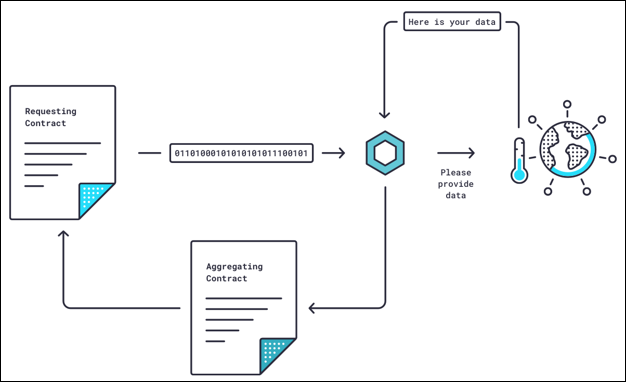You might be intrigued to know more about blockchain technology and how it will move forward now. Many people query how decentralized storage network and blockchain technology can now progress. That is what is Chainlink related to. Blockchain technology was earlier related to just safe data transfer and validation of financial transactions. But with the introduction of smart contracts, it can execute various kinds of commands based on the data input.
But since smart contracts are typically limited in taking direct input from external sources, an oracle (a medium of transferring data) like Chainlink is set between them. But the whole process is more challenging than it sounds, as multiple problems need to be tackled. So, in this post, we discuss ‘What is Chainlink?’
Table of Contents
Smart contracts have grown to a level that they are being used in activities like fundraisers. They are sets of agreed-upon agreements executed only when described conditions are met. However, the biggest problem that developers face with smart contracts is that they require data from the external world, but since they work on a blockchain, they can only use the on-chain data. That is what a mediator like Chainlink is there to furnish.
Since having a single node (oracle) to furnish this off-chain data in the form of on-chain data is bound to become centralized, Chainlink uses multiple nodes that feed information to the blockchain and the smart contract, to get the required output.

Chainlink is basically like an information converter and feeder to smart contracts. It is an oracle or a medium of sharing data, for smart contracts. Since the decentralized storage network technology is based on not giving control over the data flow to just one entity, Chainlink ensures that different nodes are there to handle the data fed to the smart contract.
A lot of people ask what is Chainlink crypto, and what does Chainlink do. One of this oracle’s biggest functions is ensuring that the data fed to the smart contracts is completely valid and comes from premium sources. It also provides data signing, which means you can trace the origin of the data.
As discussed earlier, every smart contract requires data from external sources to provide a correct output and complete the purpose for which it was created. The biggest issue that the developers face while creating smart contracts is that the isolated nature of the blockchain technology does not let external data be directly fed to the smart contracts. This is why the decentralized storage network relying on a smart contract needs a medium to share the external data in the form that the blockchain technology in use can verify.
Now, if the developers use just one node to do all the work, node manipulation and monopolized control over the smart contract are possible. This is what led to the development of Chainlink, which uses multiple nodes to safely and securely share data with smart contracts.
The Chainlink blockchain oracle’s complete architecture depends upon two basic components. Chainlink uses a consensus mechanism amongst the nodes for them to come to a singular input for the smart contract. Moreover, they can retrieve data for the smart contract multiple times. The whole architecture is based on the secure feeding of data by the nodes through their consensus mechanism. The two components that Chainlink depends upon are:
Since the smart contracts also require on-chain validation, the on-chain components refer to the oracle contracts based on the ETH chain. These components take the off-chain data requests from blockchain users to the Chainlink network, which processes it and gives results in native blockchain data form. There are different kinds of contracts in this component that all function to match the data requests with relevant oracle services.
When talking about what is Chainlink or how does Chainlink work, one thing that comes into the discussion for sure is related to the off-chain components involved in the process. These are the oracle nodes that take subsequent data from all the external sources, verify them through the consensus, and then process them to the Chainlink network for smart contract execution. It helps to translate the off-chain data to an on-chain oracle for further processing.
Now that you know what is Chainlink, and what does Chainlink do, you must see why it can be said that the future looks prosperous for the technology. Here are some of the prospects for it:
With the world looking upon what will be the next step for blockchain technology, access to smart contracts is a step forward. It has multiple use cases and can help promote decentralization in aspects other than finance.
Chainlink helps with secure and unmodified data feeding to the smart contract through consensus amongst the oracle services. It, therefore, increases the safety of data validation on the smart contract’s ledger. It can be concluded that the Chainlink blockchain services are useful for the future of decentralized storage networks and the blockchain technology itself.
Why to Invest in DeFi Coins and Token | Mobile App Technology Stack | How to Buy Real Estate in the Metaverse | Blockchain Scalability Solutions | Public Blockchain Examples | Top Altcoins | What is Proof of Work in Blockchain | Crypto Cloud Mining | Best Place to Mint NFT | What is Stake in Crypto | What is a Governance Token | Benefits of Blockchain | What is Blockchain Security | Can Blockchain be Hacked | What is Crypto Metaverse | How to Keep Crypto Safe | Bitcoin VS Ethereum | What is a Crypto Whale | What is Staking in Crypto | Ethereum that are Compatible with the EVM